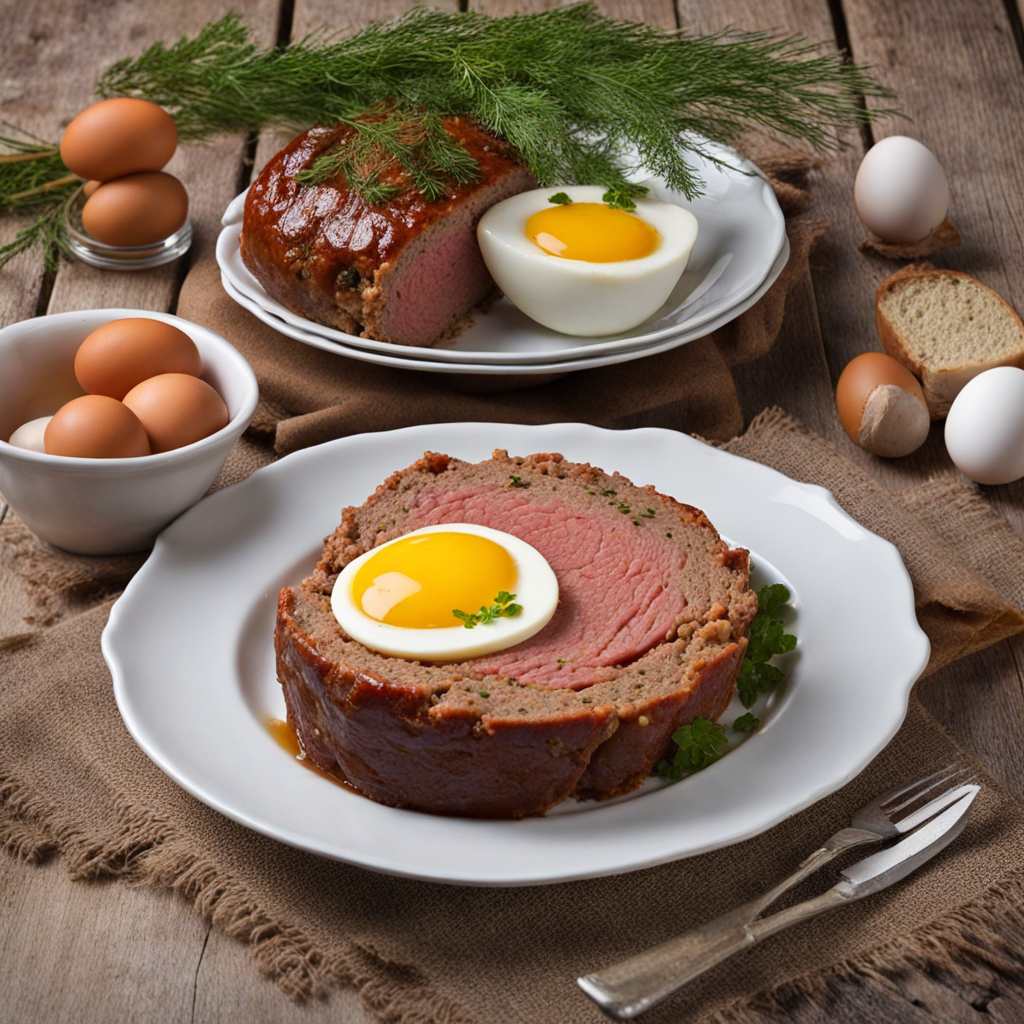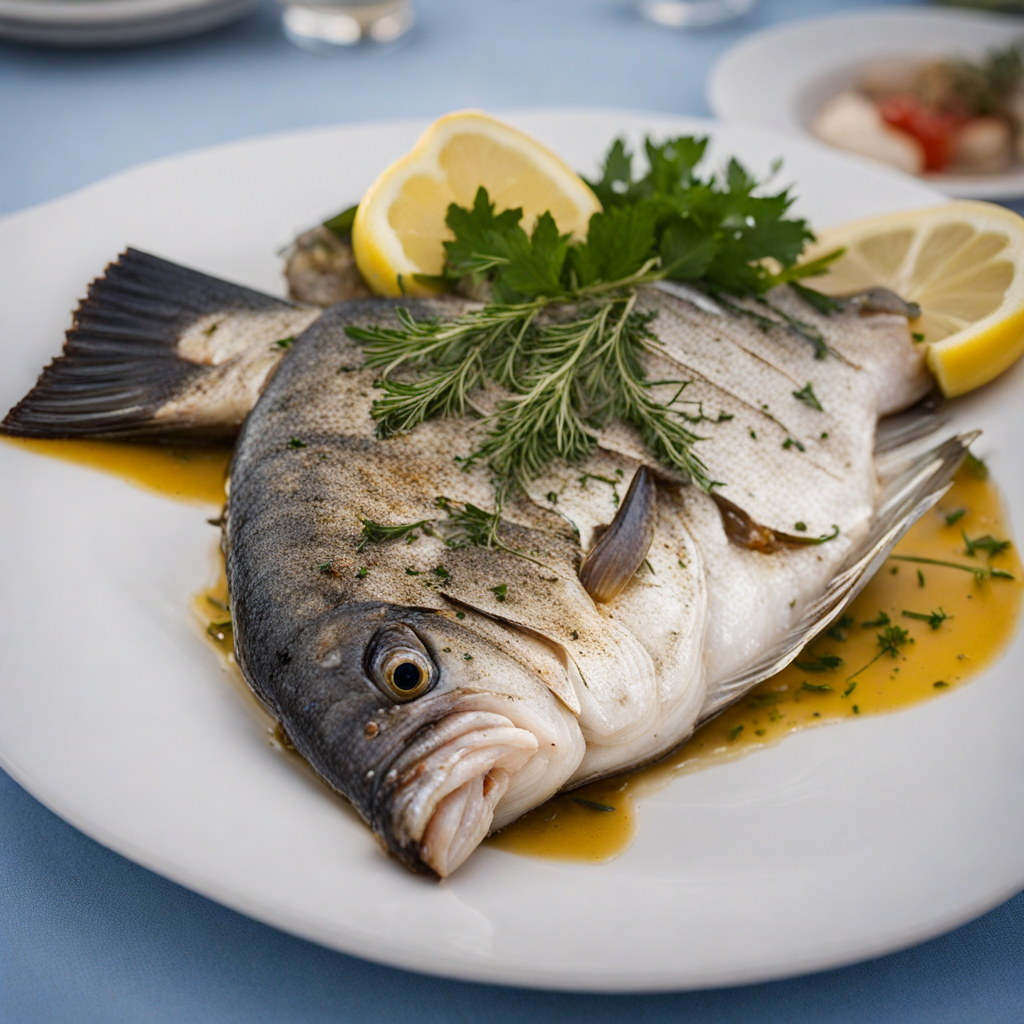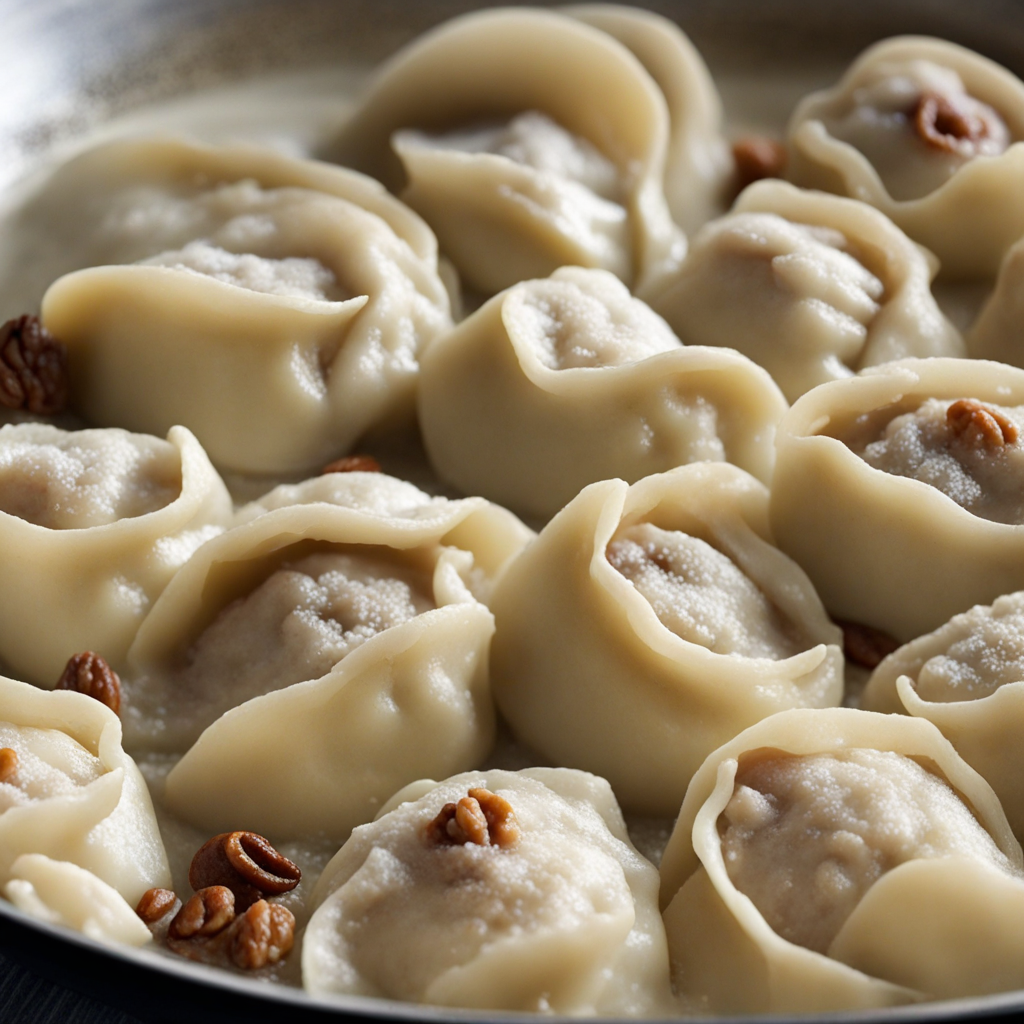Štefani Pečenka
Štefani Pečenka is a traditional Slovenian dish that showcases the country's rich culinary heritage. This succulent roasted meat dish is typically made with pork, which is marinated in a blend of aromatic herbs and spices, giving it a unique flavor profile. The marinade often includes garlic, rosemary, and thyme, which infuse the meat with a fragrant aroma and depth of taste. Once marinated, the pork is slow-roasted to perfection, resulting in tender, juicy meat with a crispy, golden-brown crust that is simply irresistible. The preparation of Štefani Pečenka is a labor of love, often reserved for special occasions or family gatherings. The dish is traditionally served with a variety of side dishes, such as creamy potato salad, sauerkraut, or seasonal roasted vegetables. These accompaniments complement the rich flavors of the roasted meat, creating a well-rounded meal that is both hearty and satisfying. The combination of textures and tastes makes each bite a delightful experience, appealing to both the palate and the senses. What sets Štefani Pečenka apart is not only its flavor but also the cultural significance it holds in Slovenian cuisine. It represents the warmth and hospitality of Slovenian families, often bringing people together around the dinner table to share stories and create memories. Enjoying this dish is not just about savoring its deliciousness; it is an invitation to explore Slovenian traditions, making it a must-try for anyone looking to discover new and exciting flavors.
How It Became This Dish
The History of Štefani Pečenka: A Culinary Gem of Slovenia #### Origins and Roots Štefani pečenka, a traditional Slovenian dish, embodies the rich tapestry of Slovenian culinary history, blending local ingredients with cultural influences that have shaped the region for centuries. Its name translates to "St. Stephen's Roast" in English, referencing St. Stephen’s Day, celebrated on December 26. This day marks the beginning of the Slovenian Christmas season, and Štefani pečenka is often prepared to commemorate the occasion, making it a festive dish associated with family gatherings and communal feasting. The dish's origins can be traced back to the agricultural practices of rural Slovenia, where families would often raise their own livestock. The practice of roasting meats, particularly pork, became common as families sought to celebrate the end of the harvest season and the onset of winter. In Slovenia, pork has long been considered a staple meat, revered for its versatility and flavor, making it a natural choice for festive occasions. #### Cultural Significance Štefani pečenka is more than just a dish; it is a symbol of Slovenian heritage and community. Traditionally, the preparation of this roast involves not only the meat but also a variety of side dishes, including potatoes, cabbage, and seasonal vegetables. This reflects the Slovenian ethos of using locally sourced ingredients, which has been a hallmark of the region's cuisine for generations. The dish serves as a focal point during St. Stephen's Day celebrations, where family and friends gather to share a meal, reminisce about the past year, and express gratitude. In this context, Štefani pečenka represents the warmth of Slovenian hospitality, highlighting the importance of communal dining in fostering relationships among family and friends. Furthermore, the dish embodies Slovenia's agricultural heritage, as it showcases the country’s commitment to sustainable farming practices. Many families still rely on traditional methods to raise livestock and grow vegetables, ensuring that the flavors of the land are preserved in their cuisine. This connection to the land is celebrated not only during festive seasons but also throughout the year, as the principles of seasonal cooking and local sourcing are integral to Slovenian culinary identity. #### Ingredients and Preparation The preparation of Štefani pečenka is an art form that has been passed down through generations. Typically, the dish features a whole pork roast, often marinated with a blend of herbs and spices. Common seasonings include garlic, rosemary, and thyme, which enhance the natural flavors of the meat. The use of fresh, local ingredients is essential, as they contribute to the dish's authenticity and depth of flavor. The process of cooking Štefani pečenka is a labor of love. Traditionally, the pork is slow-roasted, allowing the fat to render and the meat to become tender and flavorful. The roasting process can take several hours, during which the aroma fills the home, enticing family and friends to gather around the table. The accompanying side dishes, such as roasted potatoes and sautéed cabbage, are often prepared in tandem, ensuring that the meal is well-rounded and satisfying. In contemporary Slovenia, Štefani pečenka has also evolved to include variations that reflect modern culinary trends. Some chefs experiment with different types of meat, such as beef or lamb, while others incorporate international flavors into traditional recipes. Despite these adaptations, the essence of Štefani pečenka remains rooted in its historical origins, continuing to be a dish that brings people together. #### Evolution Over Time As Slovenia has evolved, so too has the significance of Štefani pečenka within its culinary landscape. Following Slovenia's independence in 1991, there has been a resurgence of interest in traditional Slovenian cuisine. Chefs and home cooks alike have embraced the country’s gastronomic heritage, leading to a revival of classic dishes, including Štefani pečenka. In recent years, Slovenia has gained recognition on the international culinary stage, with its chefs showcasing the country's unique flavors and traditions. The rise of farm-to-table dining has further propelled the popularity of Štefani pečenka, as diners seek authentic experiences that connect them to the land and culture. This renewed interest has prompted many restaurants to feature the dish on their menus, often reinterpreting it with a modern twist while paying homage to its origins. Moreover, the dish has found its place in Slovenia's vibrant food festivals, where it is celebrated alongside other traditional Slovenian foods. Events like the Ljubljana Food Festival and local fairs highlight the importance of local cuisine, drawing both locals and tourists to experience the flavors of Slovenia. At these gatherings, Štefani pečenka often takes center stage, inviting people to share in the joy of good food and community. #### Conclusion Štefani pečenka is more than just a festive roast; it is a reflection of Slovenia’s rich culinary heritage and cultural identity. Its origins in rural cooking and communal celebrations have made it a beloved dish that symbolizes the warmth of Slovenian hospitality. As Slovenia continues to embrace its culinary traditions while adapting to modern tastes, Štefani pečenka remains a cherished part of the country's gastronomic landscape. Whether enjoyed during the festive season or as a comforting meal any time of the year, Štefani pečenka serves as a reminder of the importance of family, community, and the land. As the world becomes increasingly globalized, the preservation and celebration of such traditional dishes are vital in maintaining a sense of identity and connection to one’s roots. In Slovenia, Štefani pečenka stands as a delicious testament to the enduring power of food to bring people together, nourish the body, and celebrate the spirit of cultural heritage.
You may like
Discover local flavors from Slovenia







